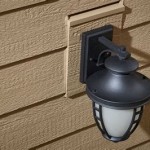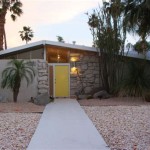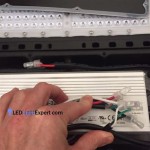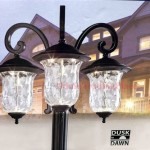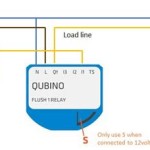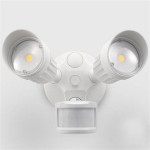Illuminating Landscapes: The Appeal of Outdoor Solar Lighted Branches
Outdoor lighting plays a crucial role in enhancing the aesthetic appeal and functionality of residential and commercial spaces. While traditional hardwired lighting systems offer reliability, they often require complex installations and can contribute to higher electricity bills. Solar-powered lighting solutions, including solar lighted branches, are emerging as an environmentally friendly and cost-effective alternative. These decorative lights offer a unique blend of natural aesthetics and modern technology, providing ambient illumination while minimizing environmental impact.
Solar lighted branches mimic the appearance of natural branches and twigs, often adorned with miniature LED lights. These lights are powered by integrated solar panels that absorb sunlight during the day, converting it into electricity to power the lights at night. The appeal of solar lighted branches lies in their ability to create a whimsical and enchanting atmosphere in outdoor spaces, enhancing gardens, patios, pathways, and entryways with a soft, inviting glow. They are also increasingly popular for seasonal decorations, particularly during the holiday season.
Understanding the Components and Functionality
Solar lighted branches comprise several key components that work in concert to deliver reliable and efficient lighting. The most important components include the solar panel, rechargeable battery, LED lights, and the branch structure itself. The solar panel, typically made of polycrystalline or monocrystalline silicon, captures sunlight and converts it into direct current (DC) electricity. Polycrystalline panels are generally more affordable but less efficient than monocrystalline panels, which offer higher energy conversion rates, especially in low-light conditions.
The generated DC electricity is stored in a rechargeable battery. Nickel-metal hydride (NiMH) and lithium-ion (Li-ion) batteries are commonly used due to their energy density and lifespan. Li-ion batteries are generally preferred for their superior performance in terms of lifespan, charging efficiency, and resistance to the "memory effect" (a phenomenon where batteries lose their capacity if not fully discharged before recharging). The battery's capacity determines the duration of illumination throughout the night.
LED lights are the light source in solar lighted branches. LEDs are energy-efficient, long-lasting, and available in a wide range of colors and brightness levels. Their low power consumption makes them ideal for solar-powered applications. The branch structure itself is typically made of durable materials like plastic, metal, or a combination of both. The material is often weather-resistant to withstand exposure to rain, sunlight, and temperature fluctuations. The design aims to emulate the appearance of natural branches, enhancing the aesthetic appeal of the lighting feature.
The functionality of solar lighted branches is relatively straightforward. During the day, the solar panel absorbs sunlight and charges the battery. An integrated light sensor detects when the ambient light level drops below a certain threshold, triggering the automatic activation of the LED lights. The lights then draw power from the battery to illuminate the branches. Most solar lighted branches also include an on/off switch, allowing users to manually control the lighting and conserve battery power when needed. Some models also feature different lighting modes, such as steady-on, flashing, or fading, providing versatility in creating desired lighting effects.
Advantages of Using Solar Lighted Branches
The adoption of solar lighted branches presents several advantages over traditional lighting options. One of the most significant advantages is energy efficiency. Solar energy is a renewable and sustainable resource, reducing reliance on fossil fuels and lowering electricity consumption. This can lead to significant cost savings over the lifespan of the lighting fixture. Solar lighted branches operate independently of the electrical grid, eliminating the need for wiring and complex installations. This makes them easy to install in various locations without requiring the services of an electrician.
Solar lighted branches are designed for outdoor use and are typically constructed from weather-resistant materials. This ensures their durability and longevity, even under harsh weather conditions. The use of LED lights further contributes to their durability, as LEDs have a much longer lifespan than traditional incandescent or halogen bulbs. The low voltage of solar-powered lights makes them safe to handle and operate, reducing the risk of electrical shock. Solar lighted branches are often considered more environmentally friendly than traditional lighting options due to their use of renewable energy and reduced carbon footprint.
The decorative appeal of solar lighted branches enhances the aesthetic value of outdoor spaces. Their natural-looking design blends seamlessly with gardens, patios, and other landscape features. The soft, ambient lighting creates a welcoming and inviting atmosphere, enhancing outdoor living spaces and increasing their usability during evening hours. Solar lighted branches are available in a variety of styles, sizes, and colors, allowing users to choose options that complement their personal preferences and the overall design of their outdoor spaces.
Factors to Consider When Selecting Solar Lighted Branches
When selecting solar lighted branches, several factors should be considered to ensure optimal performance and satisfaction. The solar panel's efficiency is a crucial consideration, as it directly affects the amount of energy captured and the battery's charging rate. Opting for models with monocrystalline solar panels generally results in better performance, especially in areas with limited sunlight. The battery capacity determines the duration of illumination. Selecting a model with a higher capacity battery ensures that the lights will remain illuminated for a longer period, especially during the winter months when sunlight hours are shorter. The type of battery (NiMH or Li-ion) also impacts performance, with Li-ion batteries typically offering better efficiency and lifespan.
The brightness and color of the LED lights should be considered based on the desired lighting effect. Warmer color temperatures (e.g., 2700K-3000K) create a cozy and inviting ambiance, while cooler color temperatures (e.g., 4000K-5000K) provide brighter and more focused illumination. The number of LEDs on each branch also affects the overall brightness. The material and construction quality of the branches are important considerations for durability and weather resistance. Choose models made from durable materials that can withstand exposure to rain, sunlight, and temperature fluctuations. Ensure that the branch structure is sturdy and well-constructed to prevent damage from wind or accidental impacts.
The design and style of the solar lighted branches should complement the overall aesthetic of the outdoor space. Consider the size, shape, and color of the branches, as well as the placement of the LED lights. Some models feature adjustable branches, allowing users to customize the appearance and direction of the lighting. The presence of additional features, such as motion sensors or remote controls, can enhance the functionality and convenience of the solar lighted branches. Motion sensors can activate the lights only when movement is detected, conserving battery power. Remote controls allow users to adjust the brightness, color, or lighting mode from a distance. The price of solar lighted branches varies depending on the features, quality, and brand. It is important to compare prices and read reviews before making a purchase to ensure that the selected model offers good value for the money.
Proper placement of solar lighted branches is essential for optimal performance and longevity. The solar panel should be positioned in a location that receives direct sunlight for at least six to eight hours per day. Avoid placing the solar panel in shaded areas or under trees, as this will reduce its energy-capturing efficiency. Ensure that the solar panel is kept clean and free from debris, such as leaves or dirt, as this can also impede its ability to absorb sunlight. The branches themselves should be placed in a location that complements the surrounding landscape and enhances the desired aesthetic effect. Consider the viewing angles and the overall impact of the lighting on the outdoor space.

Solar Powered Firefly Lights Outdoor Waterproof

Solar Powered Firefly Lights Garden For Path Landscape Outdoor

23 Led Lighted Trees Branches Solar Lights Garden Best Outdoor

Baradi 8 Led Firefly Outdoor Solar Lights Light Set In Buy At Flipkart Com

Litverse Solar Garden Lights 16 Led Firefly Outdoor Sway By Wind Warm White Light Set In Buy

S 3 Solar Power Led Blue Flower Branch Garden Stakes Outdoor Pathway Lights Rt Lanterns

Ed Branch Power 4 Deck Lights Courtyard Stair Ultra Bright Wall Mount Waterproof Dancing Flickering Lamp Solar Flame Torch Led Spot Light Outdoor Garden China Dmx Rgb Metal

Ami Led Yard Solar Lawn Light

Solar Cherry Tree Branch Light Firefly Led Outdoor Lawn Ground Insertion Courtyard Balcony Garden Layout Decoration Waterproof String Colored Temu

Solar Spiral Powered Warm White 10 Led Outdoor String Lights Diy At B Q
Related Posts
